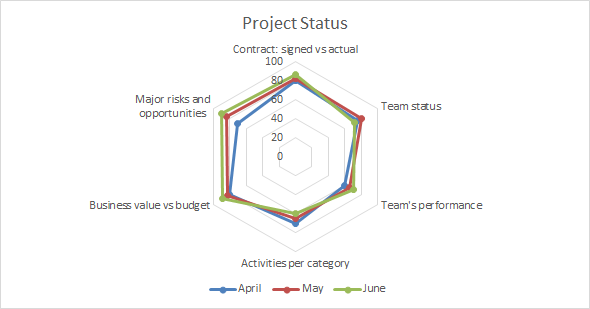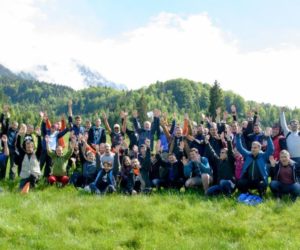Working with a remote team has its challenges, but if you approach it correctly the payoff outweighs the effort put forth to make the long distance collaboration work.
The main challenges have to do with communication, differences in working culture, visibility, and of course the language barrier.
Time zone differences can also be considered challenging, but can be leveraged as a benefit – depending on your company strategy.
The benefits are obvious – cost reduction and increased development capacity.
So, as a Project Director I’ll focus on showing you how to tackle the challenges of working with remote teams and provide a few project management tips.

Managing a remote team can be a challenge in regards to communication, working culture, and general management but there are a number of techniques to overcome these obstacles. Contact us today if you want to learn more about working with a remote team.
Working Culture
It’s important to begin by discussing working culture, because the framework you use will affect your teams’ communication approach. At Pentalog, we do this in a pragmatic way – by creating a mutually agreed upon environment that suits both groups.
Basically, what I do in my projects is set up a collaboration framework which is completed in the first 1-2 weeks of each project. During this period we outline the projects’ concrete objectives, come up with a plan on how to achieve them, and define the KPIs that will measure success on both the operational and management levels.
Next, it is important to decide on the frequency of deliveries and ensure they coincide with the clients’ company strategy. However, this is more of an overall framework.
Additionally, we need to define how our developers will work on an operational level. Pentalog suggests using Agile methodologies for both the remote team and the client’s team. If the client is not well versed in Agile methodologies then the team Project Director and Scrum Master will help them learn how to be more Agile.
Agile methodologies are perfect for remote collaborations because they focus on making quick deliveries which allow the client to easily track progress and make comments. They are also flexible and can function in many scenarios so the client can decide on team location, size and even which tools to use. Then, we set all these factors up within an Agile framework.
Overall, what we believe works best is combining our means and methods to create a new working culture for each remote collaboration. Both teams (local and remote) will end up with the same objectives, use the same tools, and will operate in the same way becoming one single team instead two separate entities.
Our years of knowledge and expertise have allowed us to fine tune this process over the years!
Language
The subject of language falls somewhere between working culture and communication so I’ll approach it from the middle ground – and the solution is simple.
If my team members can speak my client’s language then we’ll work using their native language.
I have team members that work in English, German, French, and other languages.
Otherwise, we will use an intermediary language which usually turns out to be English.
All Pentalog employees here speak English and most companies who are looking to work with a remote team do, too. Language barriers are no longer much of a problem when it comes to remote cooperation as business becomes increasingly globalized.
Time zone Difference
Depending on where your remote team is located, time zone differences will either be negligible or create challenges. If you pick a nearshore partner and have 4 to 6 hours or more of common working time there is no real challenge to coordinate your activities. It can be more difficult to work with an offshore partner if they have almost the opposite working hours of your home office.
However, this time difference can be used as an opportunity. Some companies actually search for time differences to complement their business strategies. It allows a company to extend their office hours sometimes to the point where the company is operational 24 hours a day. It also helps a company cover more calendar days as everyone will have different public holidays. This just requires strong lines of communication put in place so all teams know what they need to do and what the others have accomplished each day.
Communication
Strong communication is the key to success in any project. It is impossible to cooperate without this so creating a strong communication framework at the beginning of a project is crucial. Usually, there are two levels to this framework – the operational and the management level.
Operational Communication
The operational level of communication is coordinated by the Scrum Master. This consists of typical Scrum meetings where the team talks about short term goals, stories, tasks, problems, and progress, as well as release/version related meetings. Here we can discuss the project more broadly and set up the objectives and backlog for the next several sprints.
Operational communication is more than just Agile related meetings, though. The remote and client teams must stay in constant contact with each other. Skype and a hundred other similar programs make this long distance communication and organization easier. When my team works with a client it’s like we’re just an extension of their team in another building.
Management Communication
It’s not just the in-house and remote developers that need to keep in close contact. I need to ensure close lines of communication with my client’s management team and be certain they have the information they need to make strategic decisions.
To do this, there are two types of meetings I’ll hold with the client. Steering committee meetings, held monthly are used when working on a single project. Governance meetings, held quarterly are used when I’m working with a client on multiple projects with multiple remote teams simultaneously.
Steering Committee Meetings
The goal of the first steering committee meeting is to define KPIs and objectives, which is part of creating the collaboration framework as defined above. We will also use this meeting to define risk and risk tolerance as every company defines it differently. Furthermore, it is important that my team and I understand the interests of all different stakeholders. More people are affected by a project than just those who directly participate. It’s our job to find out what information and data the stakeholders need to manage their other projects/line of business.
The overall goal of a steering committee meeting is to give a clear overview of the project and give the client all the information they need to make informed decisions.
During these meetings they will be able to determine:
- if deliverables are being provided with efficency
- whether the team is making progress with the backlog
- how the budget is being consumed
- how the technical debt is being managed as well all other information needed to run this and other company projects.
Governance Meetings
Governance meetings are pretty similar to steering committee meetings except they focus on the portfolio rather than project level. The goal is to give our clients an overall view of all projects. This will allow them to see on a portfolio level what cannot be seen on an individual project level. Here they will be able to single out projects that need improvement, replicate projects that are working well and refocus budgets if necessary. Again, it’s about giving clients the information they need to make decisions not just on the projects we are collaborating on, but on the company as a whole.
Visibility
Achieving transparency is the end goal of communication. It is in Pentalog’s DNA to share all information we can with our customers and not just about successes. We ensure our clients are informed of all risks, challenges, and even failures. Visibility goes even further than the projects’ scope, so we also make the client aware of conditions in our local H.R market at any given time in Romania, Moldova, Vietnam, and Mexico. If our competitors are driving a particularly strong recruitment campaign, we make customers aware it might be a difficult time to ramp up the team. To alleviate that, we come up with strategies to get the extra people they need, such as splitting the team across multiple cities, adapting the calendar and balancing between sites.
Overall, our goal is not to be a hidden service provider you send a list of tasks to. We want to collaborate, keep things human and create a relationship with our clients. One where we end up learning from each other.
We don’t just look through a list of processes and apply them blindly to each project. We work directly with our clients in setting up the framework best suited to their project and business strategy as a whole.
This is also why we believe in doing onsite visits, both to our clients offices and our offices. It helps establish a sense of cooperation and truly helps create one cohesive team.
Speaking of communication, if you have any questions about what it’s like to work with a remote team, contact me. I’m more than happy to answer all your questions!
Are you interested in starting a new outsourced IT project? Work with Pentalog!
Also Read: Will your dev team deliver on time?

 (12 votes, average: 4.92 out of 5)
(12 votes, average: 4.92 out of 5)








Emil Oprea
January 25, 2018 at 9:25 am ESTBeen there, done that! It’s a challenging way of working but has its positive outcomes which I believe they add great value to a BA/PO/PM skill set, mostly in terms of communication with different cultural mindsets. There’s a major downside though in terms of project tasks pace – it tends to be slower delivery while working with remote teams and the great challenge for this is to constantly improve transparency, understand the culture (and take it seriously into consideration) and ad a touch of “professional-friendly” voice to the communication skill.
Sasha Andreev
February 28, 2018 at 1:11 pm ESTOf course, there are a lot of important moments that should be analyzed and think about before starting management a remote team. But there are also a lot of benefits. And all factors should be analyzed in the concrete business issue. But if the company decide to choose this way of collaboration and choose high-qualified specialists there won’t be any problems. So the role of the company choice is very significant.